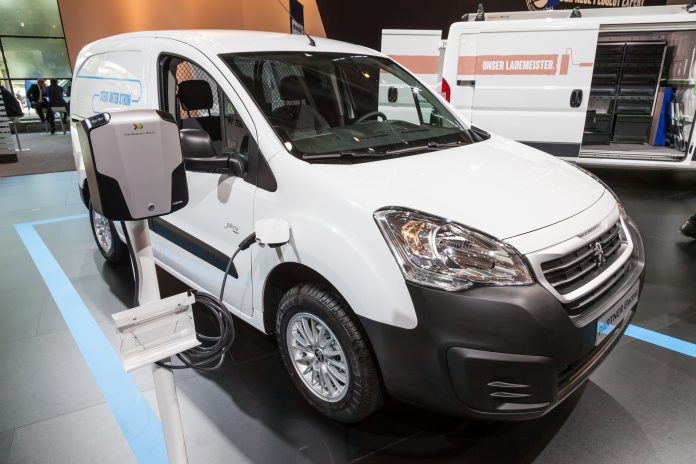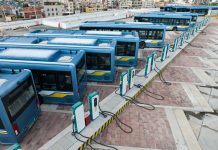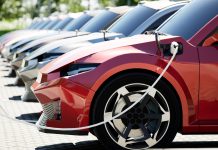Here, Simone Bruckner, director of Cressall, explains how energy captured through regenerative braking can be used effectively in electric commercial vehicles
With Dyson recently announcing its surprise move into the electric vehicle market, it is clear that the electric car boom is upon us. However, the technology behind these vehicles must continue to be refined to perfect its use in alternative applications, including commercial vehicles.
Traditional heavy-duty commercial vehicles such as trucks represent only 7% of vehicles on the road but account for over 25% of fuel consumption in the USA. Legislation, such as the US global warming emissions and fuel efficiency standards for medium and heavy-duty vehicles (M/HDV) exists to tackle this problem.
However, emissions will never be totally eliminated from an internal combustion engine. One answer is to replace commercial vehicles powered by internal combustion with electric counterparts.
Commercial vehicles, such as vans, trucks and military vehicles, are designed to have longer working lives than household cars. Zero-emission commercial electric vehicles can, therefore, make a much larger environmental impact per unit than the average electric family car.
A recent study revealed that short driving ranges and battery technology are two of the key factors stopping consumers purchasing electric vehicles. A lack of range due to energy storage capacity can cause considerable downtime for businesses operating a fleet of vehicles. This proves costly and must be addressed if commercial electric vehicles are to be adopted more widely.
Braking
Improvements to battery technologies can be slow to hit the commercial market and are often expensive. Another option for increasing range using current lithium-ion battery technology is retaining the energy lost through braking.
Traditional friction brakes convert the kinetic energy from the car’s motion to heat, where it is lost. However, regenerative brakes have the ability to convert the kinetic energy into electricity, or chemical energy that can be stored within the battery.
The wheels of electric vehicles are turned by electric motors, powered by the battery. When this same motor runs in reverse to slow the vehicle when the brake pedal is pressed, it becomes a generator, producing energy that can then be stored in the battery.
During regenerative braking, the motor turns backwards to slow the vehicle. The energy from the movement of the vehicle causes the motor to run in reverse and so energy that would usually be lost through braking is captured.
Because the health of lithium-ion batteries depends on keeping them partially charged, the additional energy from regenerative braking may not only help to extend the range of the current battery cycle, but also improve overall battery health. This may help to increase the lifespan of the expensive battery, saving both money and resources.
Full battery
When the battery is full, or in the event of an electrical fault, a backup system must be employed to discharge the excess energy, often in the form of a resistor.
This emergency braking scenario is particularly crucial with heavier vehicles, including coaches, military vehicles and trucks, which may struggle to discharge energy when coming to a sudden halt. For safety reasons, regenerative brakes are backed up with traditional friction brakes, which are used when sharp braking is employed in emergency situations.
Plug-in electric
In traditional vehicles with internal combustion engines, heat is taken from the engine via the radiator and passed through circulating coolant also, making use of the excess energy removed from the engine to prevent overheating.
However, because there is no engine or equivalent component in fully electric vehicles, there is no excess heat to be captured. Therefore, electric vehicles are forced to use resistance heating to use energy taken from the battery to heat the cabin. This uses a lot of current and runs the risk of discharging the battery extremely quickly.
Energy capture
An alternative is using a water-cooled resistor for heating as well as braking. When energy captured through regenerative braking is passed through the water-cooled resistor, the heat passed into the cooling water can be transferred to the cabin in much the same way as in internal combustion cars.
This increases energy efficiency as the heat lost through braking is retained and put to good use. To put this into perspective, the energy efficiency of a conventional car is around 20%, with 80% lost to heat through friction. Conversely, regenerative braking may be able to capture half of the 80% and put it back to work by heating the cabin.
In addition, as regenerative braking means mechanical friction brakes are only used in an emergency, sudden stop conditions, there is far less need for maintenance. Accessory components don’t require any additional maintenance, unlike the high cost of replacing brake pads and discs on a whole fleet.
As Dyson’s move into the electric vehicle sector proves, electric vehicles, including commercial vehicles, are becoming extremely accessible. Retaining energy by using water-cooled resistors is just one way of improving the energy efficiency, safety, range and battery health of these vehicles, in turn reducing their carbon footprint.











